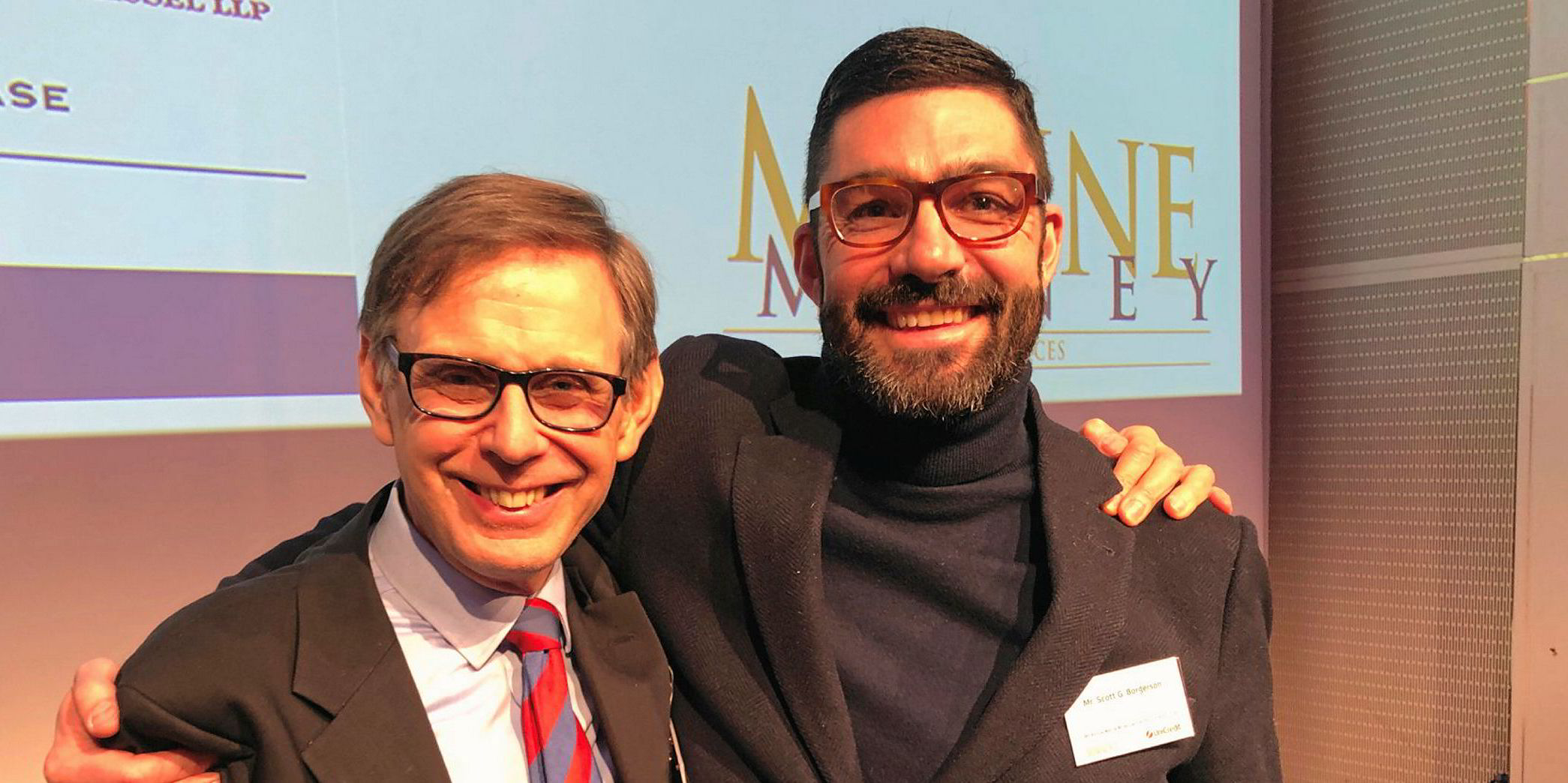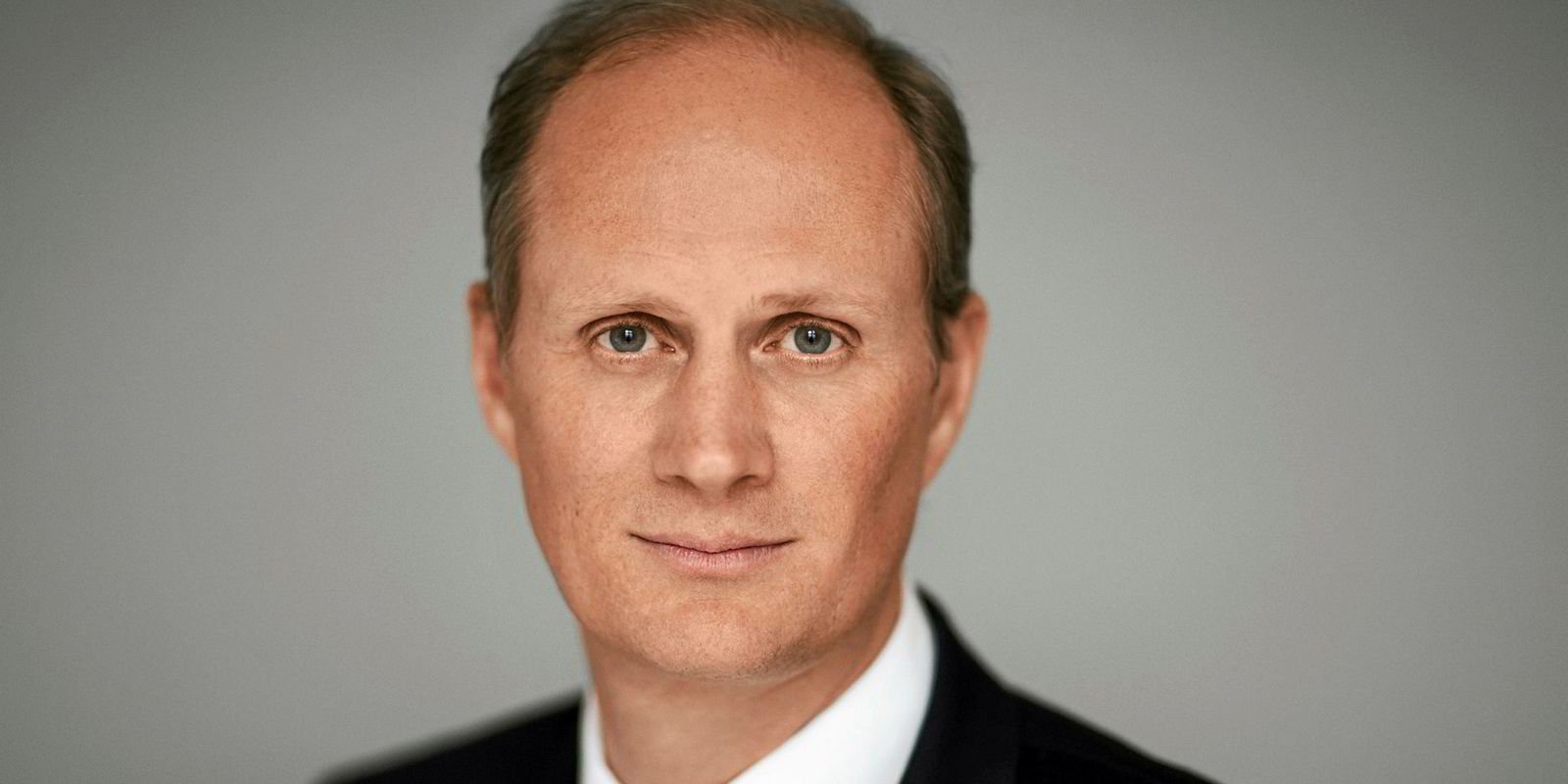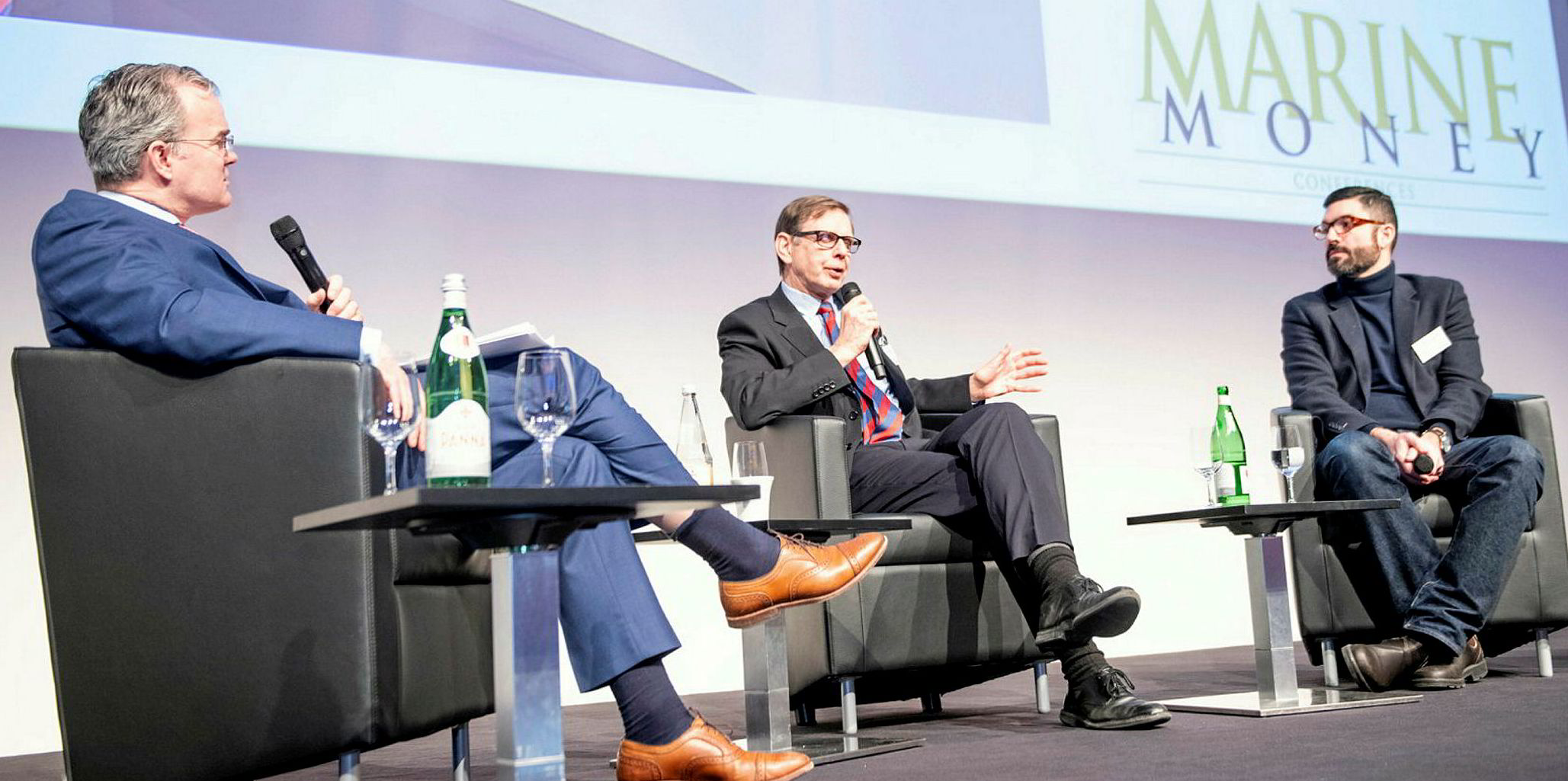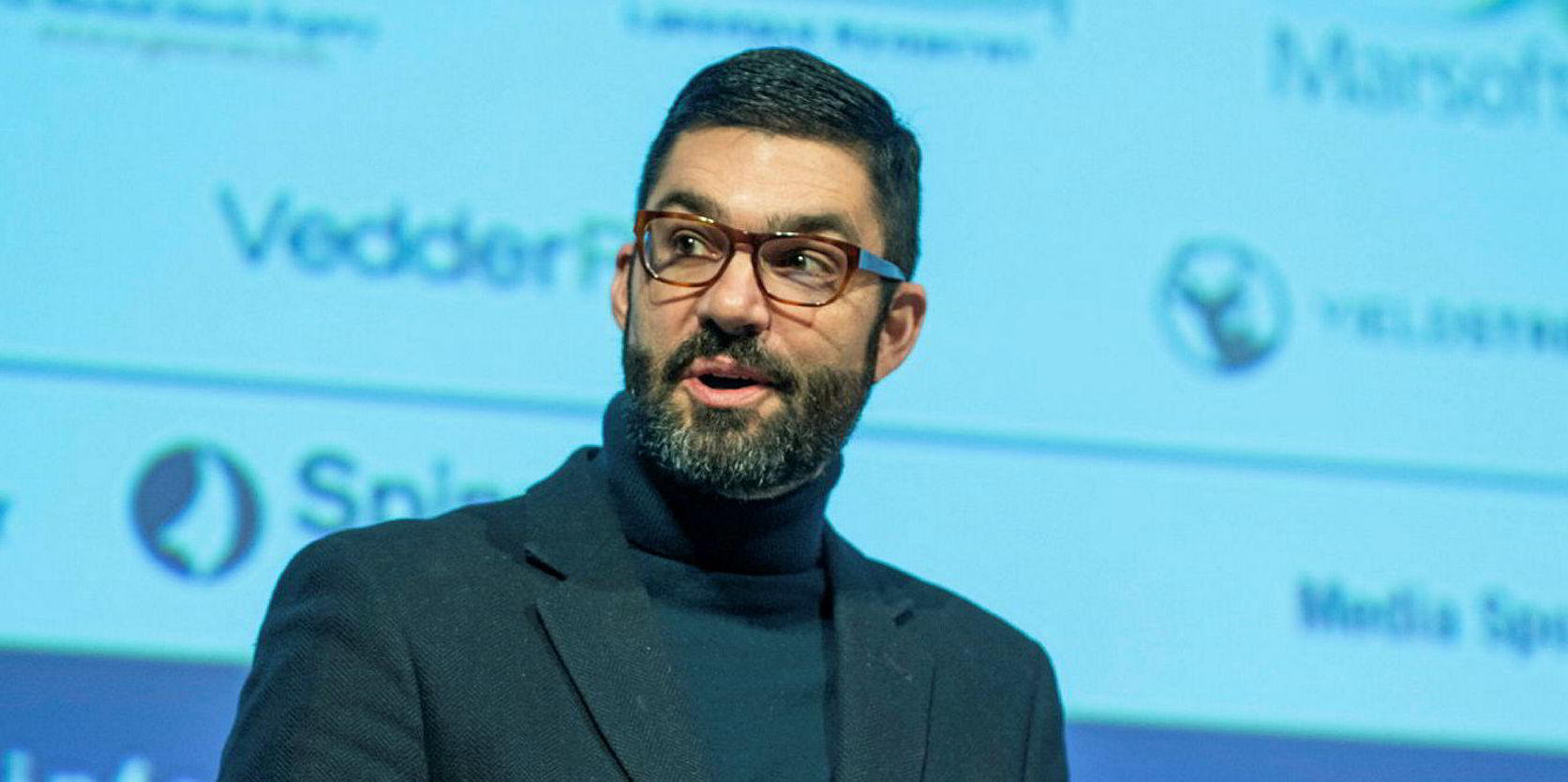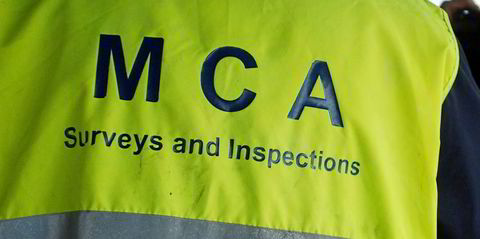The man labelled by some as shipping’s answer to Elon Musk has made his first public appearance in Europe, as his already storied 10-year-old digital freight analysis and hedge fund operation gears up for expansion.
Scott Borgerson, founder of CargoMetrics Technologies, appeared at last month’s Marine Money conference in Hamburg alongside one of his mentors, Clarksons’ Martin Stopford, to share insights into how data analysis is starting to change shipping.
Boston-based CargoMetrics began measuring ship movements in late 2009 by gathering AIS data to build a real-time picture of trade patterns.
That enabled it to build a quantitative hedge fund, backed by high-profile tech investors and other players, such as Clarksons. It monitors the data from about 120,000 ships trading through ports in 156 countries to statistically forecast prices and offer a trading edge over the market.
Near-real time game plan
The philosophy is: collect, compute, trade.
That model evolved into selling the data — “signal licensing” — to other hedge fund managers.
“CargoMetrics has been mostly stealth for a decade,” Borgerson said. “This is the first time I’ve spoken publicly about the company in Europe. After 10 years of hard work, we’re starting to be more public about our development systems.”
But he was uncharacteristically tight-lipped over its hedge fund operation. “I don’t talk a lot about it,” was his curt reply to being questioned.
He was more revealing about how the group is selling its data and analysis tools to shipowners, operators and traders to enhance their fleet management margins, and how he sees more accurate data revolutionising shipping markets.
He said CargoMetrics “has evolved into not just ‘signal’ but also optimising fleets”.
“We think that the $75bn of physical bulk freight is more or less mispriced,” he said, adding that “better data and interpretive science can give better pricing”, which could enable a huge expansion of the freight future market.
Borgerson revealed that CargoMetrics is exploring a partnership with an unnamed crude tanker operator, to sit alongside earlier fleet management data deals with Maersk Tankers in the product tanker space and Western Bulk in dry cargo.

Maersk Tankers, which TradeWinds reported made a “ship-sized investment” in CargoMetrics in 2017, uses its services to increase the efficiency of its product tanker pool.
Each morning, it runs 200m to 300m simulations of where to move its vessels to optimise trading options for up to the next two months. This has increased time charter equivalent earnings by $1,200 per day for each vessel in the Maersk Tankers pool over the market average, Borgerson claimed.
“It’s possible that someone like Maersk Tankers could operate a pool two, three, four times as big, with the same people or even fewer,” he said.
Borgerson aligns Maersk Tankers’ success, in part, to its having a chief digital officer, Peter Schroder. “Not all shipping companies have chief digital officers,” he observed. “But if you don’t, you should have one, because it’s the future.”
Stopford, president of Clarksons Research, is clearly an admirer of Borgerson. “I see what you are doing is bringing a great deal of efficiency back into the market,” Stopford said.
I see what you are doing is bringing a great deal of efficiency back into the market
Martin Stopford
CargoMetrics’ third business strand, TruFreight, aims to bring price transparency and certainty to a wide set of trades and ship types, which could provide a base for significant growth in the freight derivatives market.
Borgerson believes the lack of transparency in freight pricing drives its huge volatility, which has hindered the scope to develop an appropriately sized derivatives market.
Annualised volatility in crude oil is about 33% compared with 43% for maritime freight, while the estimated size of the crude oil paper market is around 17 times that of the physical oil market. For freight, the paper market is less than one-third of the physical market.
That is “why all the money outside this room isn’t in shipping”, Borgerson observed.
“We’re missing at least $150bn by my calculation in open interest in freight derivatives market,” he said.
'It's not about technology'
“At the end of day, it’s not about technology. It’s about culture and getting a traditional industry to adapt to more transparency in pricing. We think with that will come a functioning derivatives market.
“While it may feel special to us in the room as shipping people, this movie has been seen before basically in every other commodity, where the commodity went from an open-pitch rate, personal relationships, opacity [and] lack of transparency, to data and information that allowed for better price discovery and more efficient markets.
“This may be less romantic ... but I think it does allow an industry to mature and grow and measure everything, and not just about what the right price should be, but this translates naturally to greenhouse gas and other types of ESG [environmental, social and governance] components.
“We think freight is too volatile, which is both an opportunity to make money, and where we have a qualitative forecast, and an opportunity to contain that volatility with statistics and derivatives to make for a much more stable industry that grows for everybody.”
